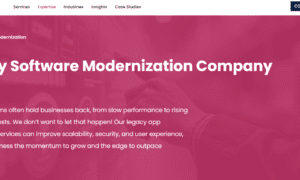Financial apps have become an integral part of our lives. From managing budgets to making investments, these apps offer convenience and efficiency. However, with this convenience comes a significant risk: identity theft. Cybercriminals are constantly evolving their tactics to steal personal information, making it crucial for users to leverage tools for identity theft protection in financial apps.
The Growing Threat of Identity Theft
Identity theft is a pervasive issue that affects millions of people worldwide. According to recent studies, financial fraud and identity theft cases have surged by over 30% in the past five years. Cybercriminals often target financial apps because they contain sensitive information such as bank account details, Social Security numbers, and credit card information. Once stolen, this data can be used to commit fraud, drain accounts, or even take out loans in your name.
To combat this threat, financial apps are increasingly integrating advanced security tools. These tools not only protect your data but also provide peace of mind. Below, we’ll discuss some of the most effective tools for identity theft protection in financial apps.
Multi-Factor Authentication (MFA)
One of the most effective tools for preventing identity theft is multi-factor authentication (MFA). MFA adds an extra layer of security by requiring users to verify their identity through multiple methods. For example, after entering your password, you might receive a one-time code on your phone or be asked to provide a fingerprint scan.
Financial apps that support MFA significantly reduce the risk of unauthorized access. Even if a hacker manages to steal your password, they won’t be able to access your account without the second form of verification. This simple yet powerful tool is a must-have for anyone using financial apps.
Encryption Technology
Encryption is another critical tool for protecting your data in financial apps. Encryption works by converting your sensitive information into a code that can only be deciphered with a unique key. This ensures that even if cybercriminals intercept your data, they won’t be able to read or use it.
Most reputable financial apps use end-to-end encryption to secure transactions and communications. When choosing a financial app, always check if it employs strong encryption protocols like AES-256. This level of encryption is virtually unbreakable and provides robust protection against identity theft.
Biometric Authentication
Biometric authentication is becoming increasingly popular in financial apps. This tool uses unique physical characteristics, such as fingerprints, facial recognition, or voice patterns, to verify your identity. Unlike passwords, biometric data is nearly impossible to replicate, making it an excellent defense against identity theft.
Many financial apps now offer biometric authentication as an alternative to traditional passwords. By enabling this feature, you can ensure that only you have access to your account. Additionally, biometric authentication is quick and convenient, enhancing both security and user experience.
Real-Time Fraud Monitoring
Real-time fraud monitoring is a proactive tool that helps detect and prevent identity theft before it causes significant damage. Financial apps equipped with this feature continuously monitor your account for suspicious activity. For instance, if a transaction occurs in an unusual location or exceeds a certain amount, the app will immediately flag it and notify you.
Some advanced systems even use artificial intelligence (AI) to analyze patterns and identify potential threats. By catching fraudulent activity early, real-time fraud monitoring can save you from financial losses and the stress of dealing with identity theft.
Secure Password Managers
Weak or reused passwords are a common cause of identity theft. Many people use simple passwords or the same password across multiple accounts, making it easy for hackers to gain access. Secure password managers address this issue by generating and storing complex, unique passwords for each of your accounts.
Financial apps that integrate password managers ensure that your login credentials are both strong and secure. Additionally, these tools often include features like auto-fill and password strength analysis, further enhancing your security.
Virtual Private Networks (VPNs)
While not specific to financial apps, virtual private networks (VPNs) play a crucial role in protecting your identity online. A VPN encrypts your internet connection, making it difficult for hackers to intercept your data. This is especially important when using financial apps on public Wi-Fi networks, which are often unsecured and vulnerable to attacks.
By using a VPN, you can ensure that your financial transactions remain private and secure. Many financial apps now recommend or even integrate VPN services to provide an additional layer of protection.
Identity Theft Insurance
Despite your best efforts, identity theft can still occur. In such cases, identity theft insurance can be a lifesaver. This tool provides financial coverage for expenses related to identity theft, such as legal fees, lost wages, and credit monitoring services.
Some financial apps offer identity theft insurance as part of their premium packages. While this tool doesn’t prevent identity theft, it can help mitigate the financial impact and provide support during the recovery process.
Regular Software Updates
Keeping your financial apps and devices up to date is a simple yet effective way to protect against identity theft. Software updates often include security patches that fix vulnerabilities and protect against new threats. By neglecting updates, you leave your devices and apps exposed to potential attacks.
Make it a habit to enable automatic updates for your financial apps and operating system. This ensures that you always have the latest security features and protections in place.
User Education and Awareness
Finally, one of the most important tools for identity theft protection is user education. Many identity theft incidents occur due to user error, such as falling for phishing scams or sharing sensitive information. Financial apps that prioritize user education provide tips, tutorials, and alerts to help users stay informed about potential risks.
By staying vigilant and informed, you can significantly reduce your risk of falling victim to identity theft. Always be cautious when sharing personal information and verify the authenticity of any requests before responding.
Conclusion
Identity theft is a serious threat in the digital age, but with the right tools, you can protect yourself while using financial apps. From multi-factor authentication and encryption to biometric authentication and real-time fraud monitoring, these tools offer robust protection against cybercriminals. Additionally, secure password managers, VPNs, identity theft insurance, regular software updates, and user education further enhance your security.
By leveraging these tools and adopting best practices, you can enjoy the convenience of financial apps without compromising your personal information. Remember, staying proactive and informed is the key to safeguarding your identity in an increasingly connected world.



































